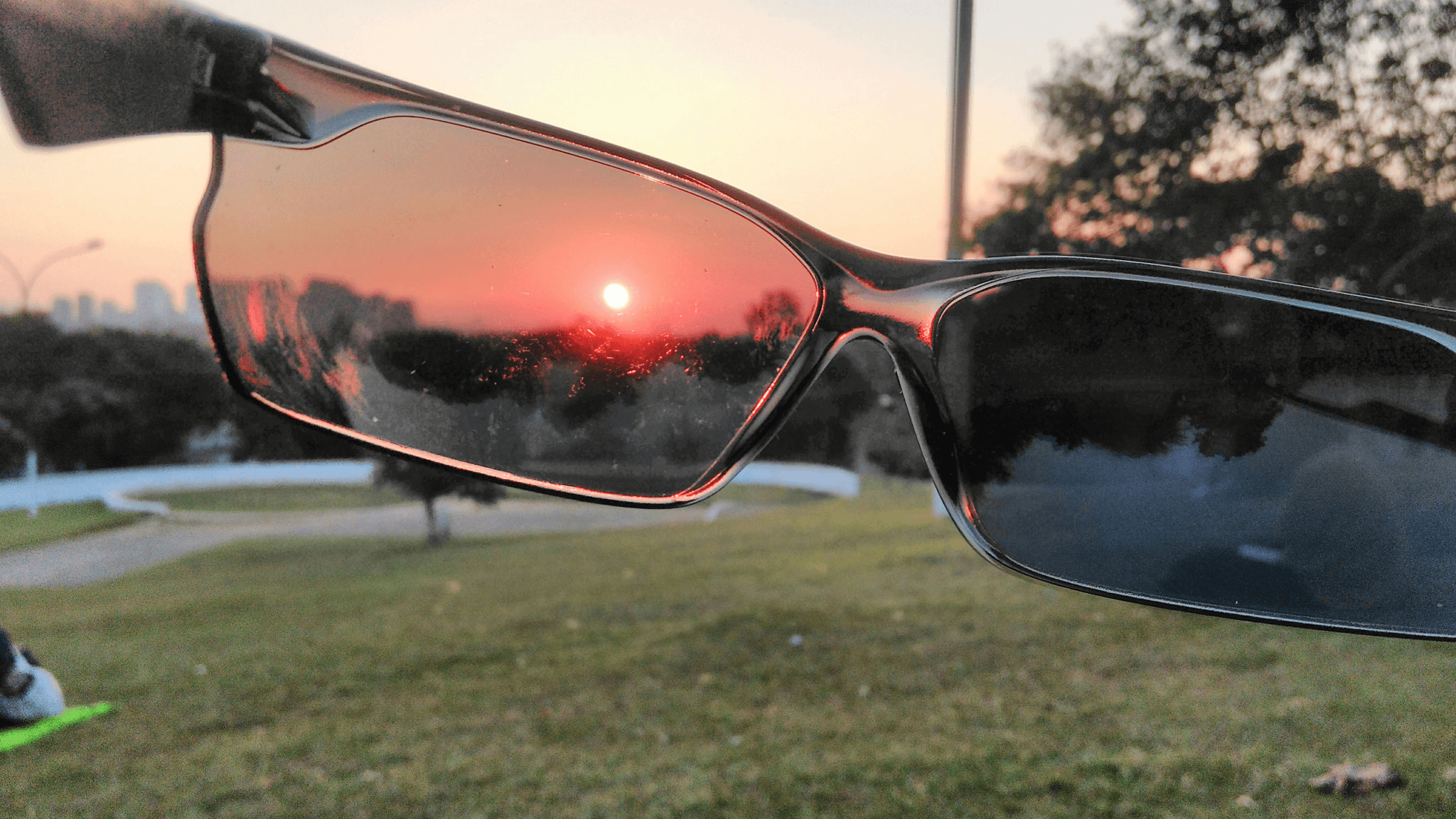Introduction

In a world where technology continuously evolves, photochromic lenses have emerged as a popular choice for those seeking eye protection and comfort. But what is photochromic technology, and how does it work? This introduction will delve into the benefits of photochromic lenses, debunk common misconceptions, and provide insights into their usage in various environments.
Understanding Photochromic Technology
At its core, photochromic technology involves lenses that can change their tint in response to light exposure. When exposed to UV rays or bright sunlight, these lenses darken to shield your eyes from glare and harmful rays. Conversely, they return to a clear state indoors or in low-light conditions, making them versatile for everyday use.
Benefits of Photochromic Lenses
One of the primary benefits of photochromic lenses is their ability to protect against harmful UV rays while enhancing visual comfort. Not only do they adapt quickly to changing light conditions, but they also reduce the need for multiple pairs of glasses—no more switching between prescription glasses and sunglasses! Additionally, many users find that these lenses help alleviate eye strain during prolonged outdoor activities.
Common Misconceptions About Photochromic
Despite their growing popularity, several misconceptions about photochromic lenses persist. Many people wonder if Are photochromic lenses good for eyes? The answer is a resounding yes; they offer essential protection against UV radiation and improve visual comfort. Others may question whether What are the disadvantages of photochromic lenses? While there are some limitations in specific settings—like driving at night—photochromics remain a practical option for most users.
What is Photochromic?

Photochromic lenses have become a popular choice for many eyewear users, but what is photochromic exactly? These innovative lenses are designed to adapt to changing light conditions, providing both convenience and eye protection. Understanding how they work can help you determine if they meet your specific needs.
The Science Behind Photochromic Lenses
At the core of photochromic technology lies a fascinating chemical reaction. When exposed to ultraviolet (UV) light, molecules within the lens undergo a transformation that causes them to darken, effectively blocking harmful rays. This science allows photochromic lenses to adjust their tint based on environmental lighting, making them versatile for various activities and settings.
How Do Photochromic Lenses Work?
So, how do photochromic lenses work in practice? When you step outside into bright sunlight, the UV rays trigger the lens to darken almost instantly. Conversely, when you move indoors or into shaded areas where UV exposure is minimal, the lenses gradually return to their clear state—making them an excellent option for those asking whether photochromic lenses are good for eyes in different environments.
Key Features of Photochromic Products
Photochromic products come with several key features that enhance their usability and appeal. They not only offer protection from UV rays but also provide comfort by reducing glare and eye strain during outdoor activities. Additionally, many users wonder about the disadvantages of photochromic lenses; while they excel in versatility and convenience, it's essential to consider factors like performance in extreme temperatures or specific lighting conditions.
Are Photochromic Lenses Good for Eyes?

Eye Protection from UV Rays
One of the standout features of photochromic lenses is their ability to block harmful UV rays. What is photochromic technology without its protective capabilities? These lenses darken in response to sunlight, effectively shielding your eyes from both UVA and UVB rays, which can contribute to cataracts and other eye issues over time. By wearing photochromic lenses, you’re not just enhancing your vision; you’re also taking proactive steps toward long-term eye health.
Comfort and Adaptability
They adapt seamlessly to changing light conditions, reducing glare and providing a more comfortable viewing experience whether you’re outdoors or indoors. This adaptability makes them an excellent choice for those asking, Are photochromic lenses good for computer work? The reduction in glare can help minimize eye strain during long hours in front of screens.
Real User Experiences
Real user experiences often shed light on the effectiveness of any product, including photochromic lenses. Many users rave about how these lenses have transformed their daily lives by providing both comfort and protection against varying light conditions. However, some also share concerns regarding performance limitations in specific environments—prompting questions like What are the disadvantages of photochromic lenses? Overall, user feedback suggests that while they may not be perfect for every situation (like driving at night), they certainly offer significant benefits that many find worth embracing.
What Are the Disadvantages of Photochromic Lenses?

While photochromic lenses offer a range of benefits, they also come with their fair share of disadvantages. Understanding these drawbacks is essential for anyone considering whether to invest in these innovative eyewear options. Let’s dive into some of the most notable downsides.
Limitations in Certain Environments
One significant limitation of photochromic lenses is their performance in certain environments. For instance, while they react well to sunlight, they may not darken effectively inside vehicles due to windshields blocking UV rays. This raises the question: are photochromic lenses good for eyes when you spend a lot of time driving? In situations where consistent light adaptation is necessary, such as skiing or at the beach, users might find them less effective than expected.
Performance Issues with Driving
When it comes to driving, photochromic lenses can sometimes fall short. While they adjust to sunlight outside the vehicle, their limited response inside can lead to glare and discomfort during long drives. If you're pondering whether photochromic is better than polarized lenses for driving safety and comfort, it's worth noting that polarized options often provide superior glare reduction and clearer vision on the road.
Photochromic Lenses Disadvantages Compared to Alternatives
In comparison with other lens types like polarized or blue light filtering glasses, photochromic lenses have some notable disadvantages. For example, while polarized lenses excel at reducing glare from reflective surfaces—ideal for water sports or bright days—photochromics may not match that level of performance in specific conditions. Additionally, if you frequently work on computers and are asking if photochromic lenses are good for computer work, you may find that dedicated blue light blocking glasses offer better protection against screen fatigue.
Photochromic vs Transitions

What Are Transitions Lenses?
Transitions lenses are a popular choice among those looking for versatility in their eyewear. These lenses automatically adjust their tint based on light exposure, offering clear vision indoors and protection from bright sunlight outdoors. They utilize a patented technology that allows them to transition quickly between clear and dark states, making them an excellent option for individuals who frequently move between different lighting conditions.
Key Differences Between Photochromic and Transitions
While all Transitions lenses are photochromic, not all photochromic lenses are Transitions. The primary difference lies in the performance and speed of transition; Transitions generally react faster than standard photochromic options due to their unique formulation. Additionally, some photochromic lenses may not provide the same level of UV protection or adaptability as Transitions, leading many users to wonder: Are photochromic lenses good for eyes? The answer often depends on individual needs and preferences.
Choosing the Right Option for You
When deciding between standard photochromic lenses and Transitions, consider your lifestyle and specific vision needs. If you spend significant time outdoors or frequently shift between various lighting environments, investing in high-quality Transitions might be worth it despite potential concerns about What are the disadvantages of photochromic lenses? Conversely, if you're primarily indoors or have specific requirements like polarized options—leading one to question: Is photochromic better than polarized?—you may find traditional photochromics more suited for your daily activities.
Are Photochromic Lenses Good for Computer Work?

In our digital age, many people are asking, Are photochromic lenses good for computer work? The answer isn't straightforward, as it largely depends on individual needs and preferences. While photochromic lenses offer unique benefits, they also come with some considerations that may affect your screen time experience.
Impact on Screen Fatigue
Screen fatigue is a common issue for those who spend long hours in front of a computer. Photochromic lenses can help reduce eye strain by adapting to varying light conditions; however, their performance indoors can be less than ideal. Many users wonder if these lenses are truly effective against the harsh glare of screens—after all, what is photochromic technology without a little illumination?
Protection Against Blue Light
Another significant concern for computer users is blue light exposure, which can lead to discomfort and disrupted sleep patterns. While photochromic lenses primarily focus on UV protection and light adaptation, some variations incorporate blue light filtering technology. This raises an interesting question: Is photochromic better than polarized when it comes to protecting your eyes from harmful rays emitted by screens?
Recommendations for Computer Users
For those who frequently work on computers, it’s essential to choose the right eyewear based on personal needs and activities. If you're considering what are the disadvantages of photochromic lenses in this context, keep in mind that their effectiveness may vary depending on lighting conditions and screen brightness. Ultimately, consulting with an eye care professional can help you determine whether photochromic or alternative options like Transitions would best suit your daily tasks.
Conclusion

In wrapping up our exploration of photochromic technology, it's clear that these innovative lenses offer a unique blend of convenience and protection. As we look to the future, advancements in this field promise even greater enhancements in functionality and user experience. Understanding what is photochromic can help you appreciate how these lenses adapt to varying light conditions, making them a smart choice for many eyewear users.
The Future of Photochromic Technology
The future of photochromic technology looks promising, with ongoing research aimed at improving responsiveness and clarity. Innovations may lead to lenses that not only darken faster but also provide better visual acuity under different lighting conditions. As consumers ask, “Are photochromic lenses good for eyes?” the answer will increasingly lean towards enhanced eye health benefits through advanced UV protection and comfort.
Making an Informed Choice
When considering whether to invest in photochromic lenses, it’s essential to weigh their advantages against potential drawbacks. While they offer significant benefits like UV protection and adaptability for outdoor activities, understanding what are the disadvantages of photochromic lenses is crucial before making a decision. By comparing options such as “Photochromic vs Transitions,” you can determine which type best suits your needs—whether it's for everyday use or specific activities like driving or computer work.
Daposi Eyewear: Your Partner in Innovation
At Daposi Eyewear, we believe in empowering our customers with knowledge about eyewear technology like photochromics. Our selection includes cutting-edge designs that utilize the latest advancements in this field, ensuring you have access to the best products available. Whether you're curious about what is photochromic used for? or need guidance on whether “are photochromic lenses good for computer work,” our team is here to help you make informed choices that enhance your vision and lifestyle.
